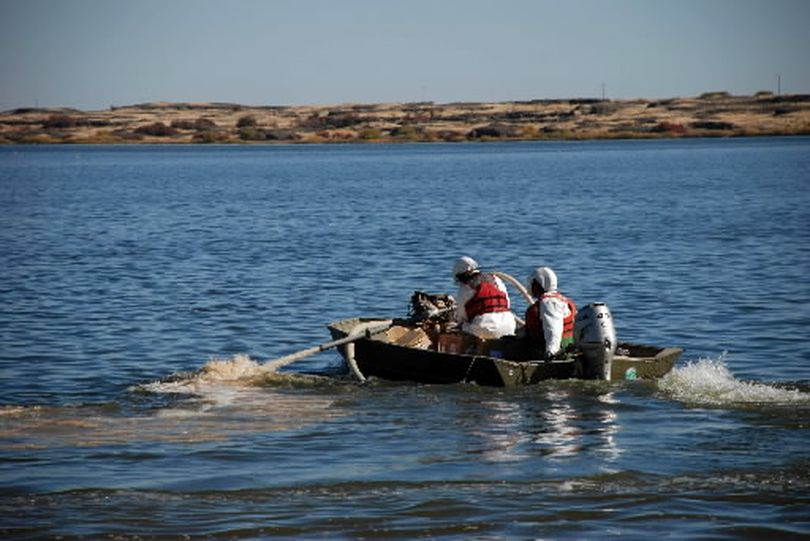Badger, Spectacle among lakes cited for rotenone treatment

FISHING – Badger Lake in Spokane County is among three lakes in Eastern Washington proposed by state fisheries biologists to be treated with rotenone, ridding the waters of various undesirable species so the lakes can be restocked with trout.
The Fish and Wildlife Department has set public meetings on this and other proposals for 7 p.m.:
- Tuesday, July 30 – at the City Hall Council Chamber, 209 S. Whitcomb in Tonasket.
- Wednesday, July 31 at the city library, 610 1st St. in Cheney.
Other trout management lakes proposed for “rehabilitation” are Spectacle Lake in Okanogan County and the Hampton and Pillar-Widgeon Lake chains in Grant County.
These lakes, which have been treated every 12-15 years are among the best trout-fishing lakes in the state when they're at their prime. In the case of badger, it appears that "bucket biologists" have illegally planted smallmouth bass in the lake, degrading its fishing potential, fisheries biologists say.
Rotenone is a natural product commonly used to remove undesirable fish species from lakes and streams. Invertebrate populations recover quickly from the treatments to provide food for the new crop of hatchery trout.
Final consideration of the proposals will be made by the WDFW director in early September.
According the the WDFW:
Rotenone is an organic substance derived from the roots of tropical plants, which the U.S. Environmental Protection Agency has approved for use as a fish pesticide and as an insecticide in the agriculture industry. It has been used by WDFW in lake and stream rehabilitations for more than 70 years, and is commonly used by other fish and wildlife management agencies nationwide.
